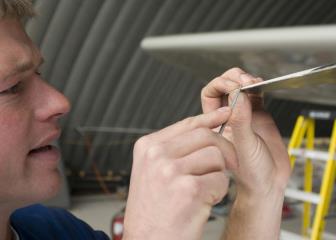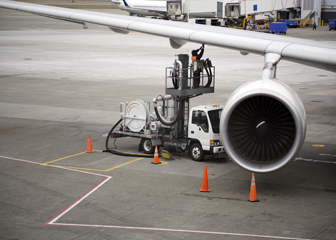Summary
Please enable javascript to play this video.
| Quick Facts: Aerospace Engineering and Operations Technologists and Technicians | |
|---|---|
|
$79,830 per year
$38.38 per hour |
|
| Associate's degree | |
| None | |
| None | |
| 9,300 | |
| 8% (Much faster than average) | |
| 800 | |
What Aerospace Engineering and Operations Technologists and Technicians Do
Aerospace engineering and operations technologists and technicians run and maintain equipment used to develop, test, produce, and sustain aircraft and spacecraft.
Work Environment
Aerospace engineering and operations technologists and technicians usually work in manufacturing plants, laboratories, and offices. Most work full time.
How to Become an Aerospace Engineering and Operations Technologist or Technician
Aerospace engineering and operations technologists and technicians typically need an associate’s degree in engineering technology or a related field. Some employers consider candidates who have a high school diploma or have completed a certificate program.
Pay
The median annual wage for aerospace engineering and operations technologists and technicians was $79,830 in May 2024.
Job Outlook
Employment of aerospace engineering and operations technologists and technicians is projected to grow 8 percent from 2024 to 2034, much faster than the average for all occupations.
About 900 openings for aerospace engineering and operations technologists and technicians are projected each year, on average, over the decade. Many of those openings are expected to result from the need to replace workers who transfer to different occupations or exit the labor force, such as to retire.
State & Area Data
Explore resources for employment and wages by state and area for aerospace engineering and operations technologists and technicians.
Similar Occupations
Compare the job duties, education, job growth, and pay of aerospace engineering and operations technologists and technicians with similar occupations.
More Information, Including Links to O*NET
Learn more about aerospace engineering and operations technologists and technicians by visiting additional resources, including O*NET, a source on key characteristics of workers and occupations.
 United States Department of Labor
United States Department of Labor








